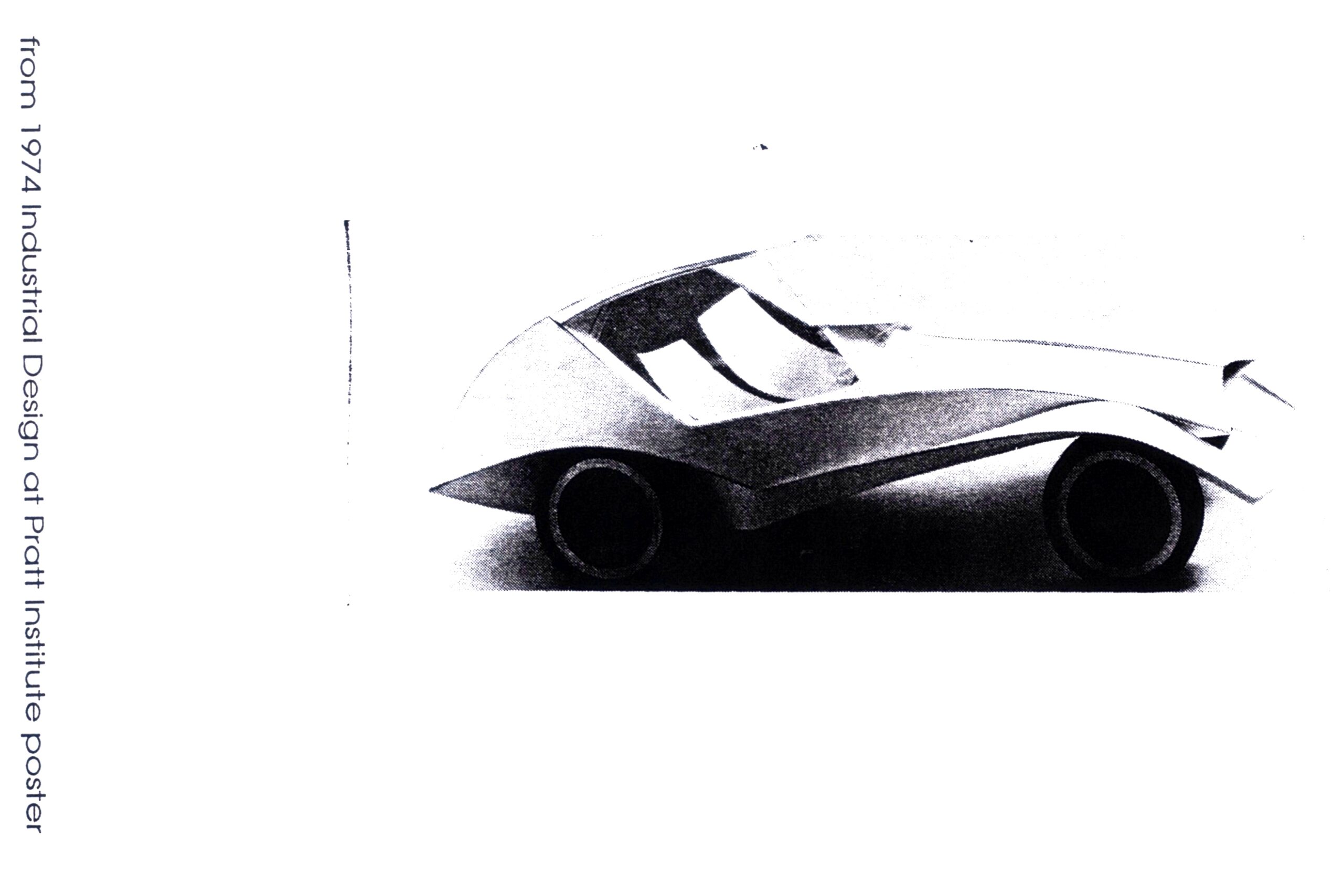Planar Cars: Account from Bruce Hannah
“Rowena and I were discussing how cars were designed, sketching rapidly with markers (while making zooming car noises), and then carving a big chunk of clay into some recognizable car-like form. That didn’t make any sense when you thought about the materials cars were made from, sheet metal. It seems wrong to stamp it into the carved clay forms, although most people and designers accept this as inevitable. The VW Beetle, the original one that challenges the very idea of a car as we still know it, is one of the few car shapes that actually uses the strengths of sheet metal to create its wonderful arch form. The metal actually performs as a planar form. Sheet metal is flat, thin, and without bending or folding as limp as overcooked pasta. So you have to manipulate it in some way to create structure. Rowena and I thought that the material liked being warped into structural configurations. Even scoring and folding produced forms that left the material’s integrity intact.
“I wanted to see if there were other kinds of shapes that cars might take while still respecting the material. It seems GM was also interested, because they funded our exploration. Most car designers still create the shapes of cars by visualizing their ideas two dimensionally, even on the computer. Then they have someone else create the form in clay. So Rowena and I thought it might be interesting to try to figure out another way to develop car forms, starting with the actual materials. We wanted to see what shapes sheet metal could make. This was quite upsetting to the teachers in the automotive studio at Pratt, but we persisted anyway.
“My thought was to break the car down into areas where different shapes were necessary for different functions; such as fenders, hoods, trunks, roofs, bumpers, seats, dashboards and windows. There were 4×8-foot Homasote panels of right front fenders and left rear fenders and roofs. You get the idea; the studio was filled with planar possibilities. They were all created within Rowena’s rules of the plane: planes will not be twisted, but gently bent or curved into existence; folding is okay if the fold is not too ‘tight.’ Once we had our ‘visual vocabulary’ of planar forms we would assemble cars by roaming the room and choosing the component parts. It was possible to sketch a car in an hour, and have a pretty good idea of how to correct the form if needed. It was great fun and we probably created about 50 car ideas that summer.
“For years after that first summer of ‘62 Rowena tried to get other students to explore car forms through the interaction of planes. Some of them even got as far as metal prototypes.”
